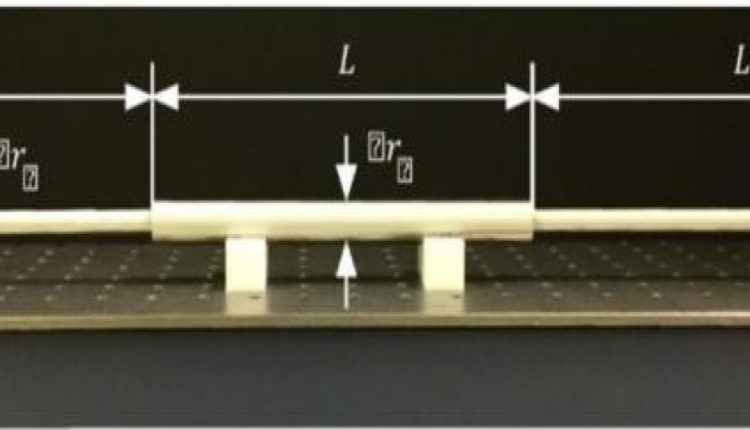Light and sound waves are at the basis of energy and signal transport. They are fundamental to some of our most basic technologies—from smartphones to engines. Scientists, however, have yet to devise a method of storing a wave intact, indefinitely, and then directing it to the desired location on demand. This capability would make it possible to manipulate waves for energy harvesting, quantum computing, structural-integrity monitoring, information storage, and more.
In a newly published paper in Science Advances, a group of researchers led by Andrea Alù, founding director of the Photonics Initiative at the Advanced Science Research Center (ASRC) at The Graduate Center, CUNY, and by Massimo Ruzzene, professor of Aeronautics Engineering at Georgia Tech, have experimentally shown that it is possible to efficiently capture and store a wave intact then guide it towards a specific location.
To achieve their goal, the scientists had to devise a way for changing the basic interaction between waves and materials. When a light or sound wave hits an obstacle, it is either partially absorbed or reflected and scattered. During absorption, the wave is converted into heat or another form of energy. Materials that can’t absorb waves only reflect and scatter them. The researchers’ goal was to find a way to mimic the absorption process without converting the wave into other forms of energy and instead of storing it in the material. This concept, introduced theoretically two years ago by the ASRC group, is known as coherent virtual absorption.
To prove their theory, the researchers reasoned that they needed to tailor the waves’ time evolution so that when they touched non-absorbing materials, they wouldn’t be reflected, scattered, or transmitted. This would prevent from escaping; it would be efficiently trapped inside as if it were being absorbed. The stored wave could then be released on demand.
During their experiment, researchers propagated two mechanical waves traveling in opposite directions along a carbon steel waveguide bar that contained a cavity. The time variations of each wave were carefully controlled to ensure that the cavity would retain all the impinging energy. Then, by stopping the excitation or detuning one of the waves, they were able to control the release of the stored energy and send it towards a desired direction on demand.
The proof-of-concept experiment could have broad implications for efficient harvesting, storing, and control of energy flow for mechanical and optical applications. In addition, the findings could facilitate improved technology for monitoring the structural integrity of bridges and other structural components. It could also have applications in quantum computing and ultralow-energy photonics.
Source: Advanced Science Research Center, City University of New York

